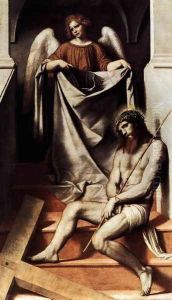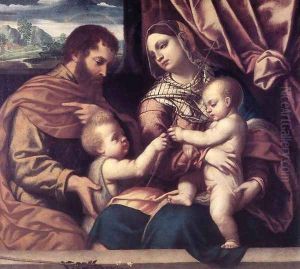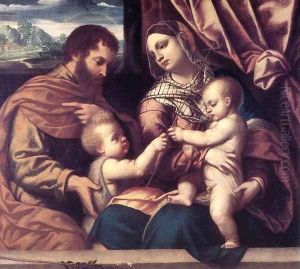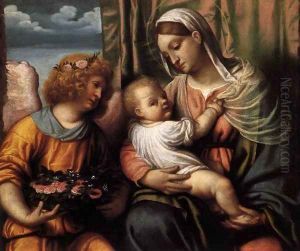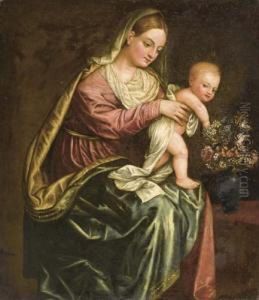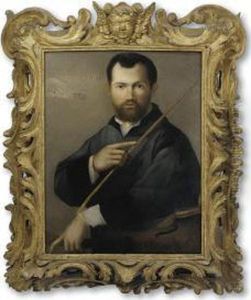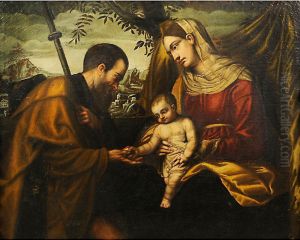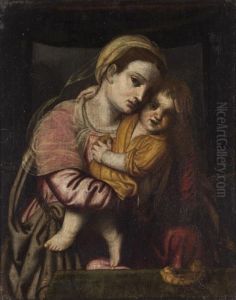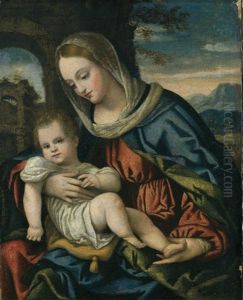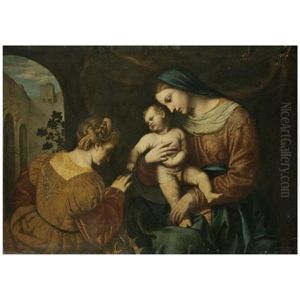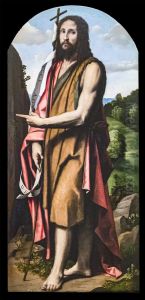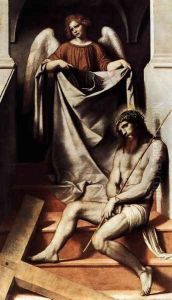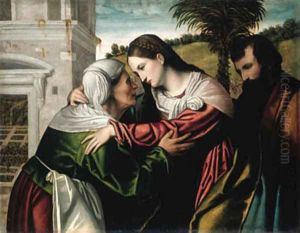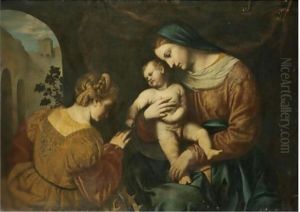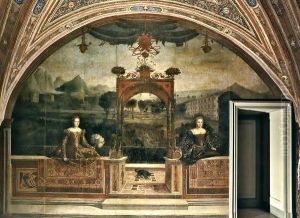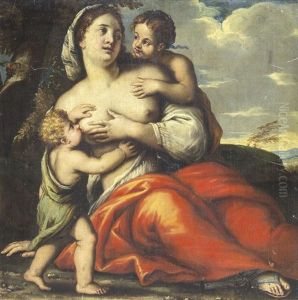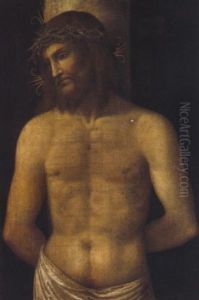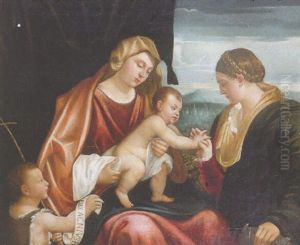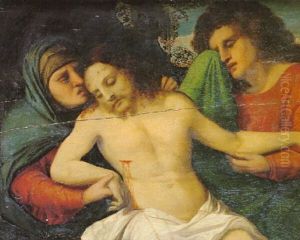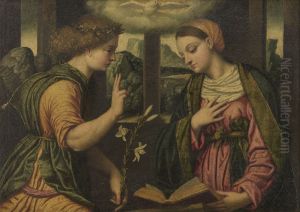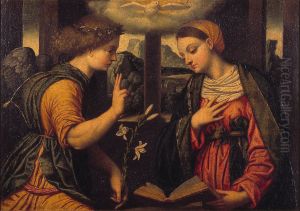Alessandro Bonvicino (Moretto da Brescia) Paintings
Alessandro Bonvicino, more commonly known as Moretto da Brescia, was an Italian Renaissance painter who was born in Brescia in 1498. Moretto was a prominent figure in the Brescian school of painting and is celebrated for his sophisticated use of color and adept incorporation of Northern European influences into his work. His style is characterized by its elegance, clarity, and strong sense of volume and form.
Moretto began his artistic training at a young age in the workshop of Floriano Ferramola, a painter from Brescia. He quickly developed a distinctive style that was influenced by the great Venetian painters of the time, particularly Titian and Giorgione, as well as by the work of Lorenzo Lotto, who spent some time in Brescia. However, Moretto's work is also noted for its individuality and divergence from the Venetian style, incorporating a greater sense of realism and a subdued palette that was likely influenced by his contact with Lombard painting and possibly German printmaking.
Throughout his career, Moretto produced a vast array of religious works, including altarpieces, frescoes, and devotional paintings that were commended for their piety and emotive power. His major works include the altarpiece 'Assumption of the Virgin' for the church of San Clemente in Brescia, 'The Supper at Emmaus', and 'Saint Nicholas in Glory'. He was also known for his portraits, which display a psychological depth and realism that were ahead of his time.
Moretto's religious works are particularly valued for their combination of serene piety and refined emotion, often set against landscapes that are rendered with atmospheric perspective. His portraits are celebrated for their realism and character, capturing the social status and personality of his subjects with a directness that was new to Italian portraiture at the time.
Moretto da Brescia's contribution to art was substantial in that he bridged the gap between the High Renaissance and Mannerism, influencing the development of the late Renaissance style in northern Italy. His works can be found in various churches in Brescia and in major museums around the world.
He continued to paint and influence other artists in the region until his death in 1554. Moretto's legacy was carried on by his pupils, among whom was the famous mannerist painter Giovanni Battista Moroni, who is considered to be one of the finest portraitists of the 16th century. Moretto da Brescia remains an important figure in the history of Italian Renaissance art, known for his unique blending of northern and Italian artistic traditions.

